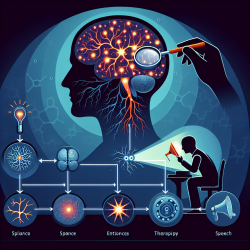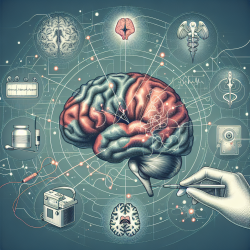Introduction
Alternating Hemiplegia of Childhood (AHC) is a rare and complex neurodevelopmental disorder characterized by episodes of hemiplegia, often triggered by environmental or psychological stressors. The condition is linked to mutations in the ATP1A3 gene, affecting ion transport and neuronal excitability. Understanding and managing AHC requires a comprehensive approach, as outlined in the research article "Navigating the Complexity of Alternating Hemiplegia in Childhood: A Comprehensive Review."
Key Insights for Practitioners
The research emphasizes the importance of a multidisciplinary approach in managing AHC, involving neurologists, neuropsychologists, dietitians, and other specialists. This integrated care model addresses the diverse symptoms of AHC, including motor function impairments, cognitive challenges, and autonomic dysfunctions.
Implementing Research Outcomes
- Genetic Testing: Early genetic testing for ATP1A3 mutations can confirm the diagnosis of AHC, allowing for targeted management strategies.
- Prophylactic Treatment: Flunarizine, a calcium channel blocker, is highlighted as an effective prophylactic treatment to reduce the frequency and severity of hemiplegic episodes.
- Multidisciplinary Care: Regular consultations with a multidisciplinary team can optimize the management of AHC, addressing both acute episodes and long-term developmental needs.
- Family Education: Educating families about potential triggers and management strategies is crucial in reducing the impact of AHC on daily life.
Encouraging Further Research
While current treatments focus on symptom management, further research is needed to develop disease-modifying therapies. Practitioners are encouraged to stay informed about advancements in genetic research and novel therapeutic approaches that may offer new hope for individuals with AHC.
Conclusion
AHC presents significant challenges for affected individuals and their families. By implementing the insights from recent research, practitioners can enhance their skills and provide more effective care. Continued collaboration and research are essential to improve outcomes for those living with this complex disorder.
To read the original research paper, please follow this link: Navigating the Complexity of Alternating Hemiplegia in Childhood: A Comprehensive Review.










